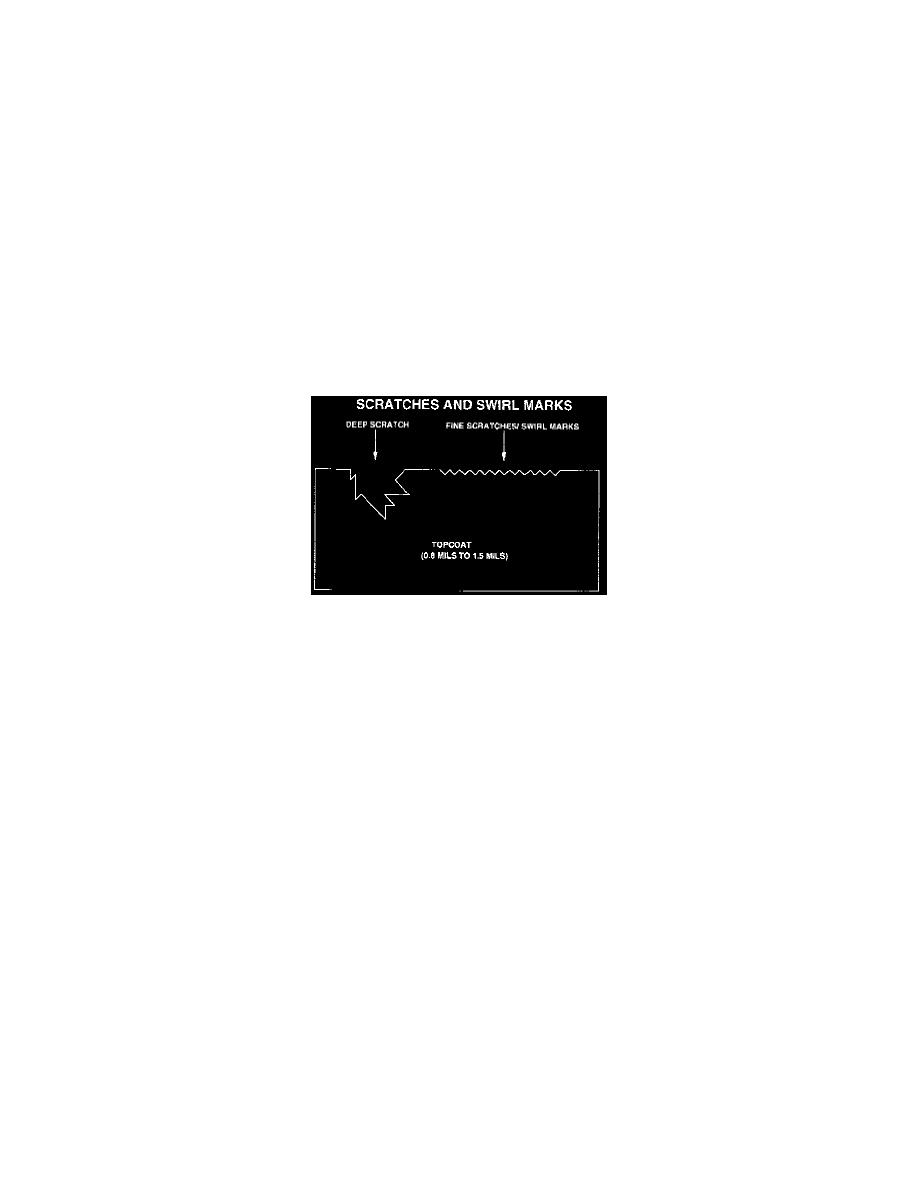Mirage Sedan DE L4-1468cc 1.5L SOHC MFI (1997)

Elcometer 246 F (Electric/Digital)-Suggested retail price $600.00
ProGauge (Mechanical)-Suggested retail price $30.00
Paint Damage Causes
It helps to inspect the paint surfaces outdoors as well as indoors under fluorescent lights. Some of the affected areas may show up better with the help of
inside lighting. Sometimes you can feel the damage; other times it takes more than a touch. The key here is to carefully verify the extent of damage to
find a way to repair the affected areas without having to repaint the panel or sometimes the entire vehicle.
Acid Rain
Acid rain forms when pollution is combined with rain and/or moisture in the atmosphere. When Sulfur Dioxide and Nitrogen Oxides mix with water
molecules, they form a weak Sulfuric Acid and Nitric Acid, otherwise known as Acid rain.
As the rain evaporates the acid concentration increases, creating pits in the surface. This damage is further accelerated by sunlight.
Rail Dust
Rail dust is iron particles that fall onto the paint which occurs during transportation. These airborne iron particles become embedded into the paint finish
on contact. This causes a rough finish and stains the surface, which is created by the iron dissolving when moisture or water are present.
Scratches
Scratches are the result of contact of a hard object with the painted surface. Some scratches found on new vehicles are caused by tiedown chains used
during transportation.
Swirl Marks
Swirl marks are fine scratches remaining from incomplete or improper buffing operations.
Paint Damage Classifications
Again, paint damage should be inspected both outdoors with natural light and indoors under fluorescent lights. It is important to inspect each vehicle at
the time of delivery for paint damage. The earlier the damage is found, the easier it is to repair.
All the previously mentioned types of damage can be classified as Minor Damage, Major Damage, and Rail Dust.
Minor Damage is small pits in the paint surface caused by pollution, such as acid rain, rail dust, scratches, swirl marks and organic pollution. The
average depth is about 0.2 mils, (.0002"). To correct minor damage, use a buffing procedure.
Major Damage is more severe pitting. The depth of this damage can range from approximately 0.2 mils to 0.4 mils, (.0002"-.0004"). To correct major
damage, wet sanding and buffing will be necessary. Any damage more than 0.5 mils deep will require repainting of the affected area.
Rail Dust can be either minor or major damage depending on the severity. The difference in repairing rail dust is the method of repair. For rail dust first
remove the iron particles by using an Industrial Fallout Remover. After the rail dust particles have been removed, small pits will be left in the paint.
Repair these pits by using the appropriate procedure (i.e., minor or major damage repair).
Required Materials
